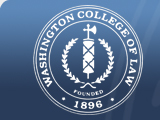Abstract
Justice Jackson’s concurring opinion in The Steel Seizure Case has taken on iconic status among legal scholars and had been adopted by the Supreme Court as the governing framework for evaluating presidential power. But Jackson’s principles are conclusory, do not rest on any historical foundation, and raise as many questions as they answer. He fails to examine, much less justify, the existence or scope of implied presidential powers, nor does he meaningfully explain the extent to which those powers are subject to congressional regulation and override. I apply novel originalist methodologies to answer those unexamined questions, with important consequences to several current theories and cases concerning presidential power. The construction of the presidency and the allocation of legislative and executive powers can be understood only by an examination of the historical experiences that influenced the Framers. Prominent among these were the preceding two centuries of constitutional developments in England which critically influenced the allocation of executive and legislative power in the Constitution. The central lesson of these historical experiences was that proscriptive legislative restraints on executive power were necessary but not sufficient to prevent autocracy. any of the English proscriptions on the exercise of executive power were included in our Constitution, but there was also a massive transfer of previously held executive power to the legislature. Most of the prerogatives that had been exercised by the King were vested completely in Congress, prohibited to the President, or omitted altogether from the Constitution. Of the small number delegated to the Executive, only one was the same as its royal counterpart; the others were more limited or structurally shared with the Legislative Branch. I examine this history in detail and apply its underlying principles to develop a general theory of presidential power. In lieu of creative but ultimately inconclusive arguments over indefinite powers that are said to be “executive” in nature, implied powers should be tied to, and derived from, the powers expressly vested in the President in Article II. I refute the propositions that the Vesting Clause is a residual source of plenary executive power and that there is a presidential “completion” power. I apply and elaborate on these principles in the context of the President’s two most important implied powers - executing the laws and developing and implementing foreign policy. The President has broad discretion in choosing how to exercise these powers, but they are not plenary in nature. They are subject to three basic limitations: (1) the President may not, without congressional authorization, use these powers to change domestic law or create or alter existing legal obligations; (2) these powers are subject to regulation by Congress; and (3) in the event of a conflict between the exercise of these powers and congressional legislation, the latter prevails. Finally, I argue that these limits on presidential power have continuing validity despite the enormous changes in the country since these principles were established. We are now in much the same situation as England in the 18th century - the real power of the Executive is much greater than its nominal legal power. Although the Framers viewed the President as a necessary check on an otherwise dominant Congress, the present reality is now the reverse. The Executive has become the most powerful branch of government. There is no reason to adopt legal theories that would further enhance executive power.
Recommended Citation
Reinstein, Robert J. “The Limits of Executive Power.” American University Law Review 59, no.2 (December 2009): 259-337

